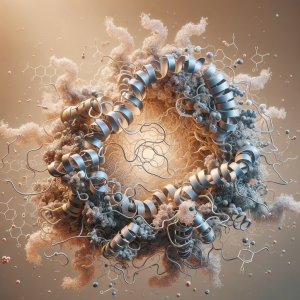HKDC1: The Key Protein in the Fight Against Cellular Aging
In a major breakthrough in cell biology, a research group from Osaka University has identified a protein, named HKDC1, as a key factor in maintaining cellular youth. This research, published in the prestigious journal Proceedings of the National Academy of Sciences, reveals how HKDC1 plays a vital role in preserving the functionality of two essential cellular structures: the mitochondria and lysosomes.
Mitochondria are known as the ‘powerhouses’ of cells, generating the energy necessary for their functioning. Lysosomes, on the other hand, act as a kind of ‘recycling system’, breaking down and reusing cellular components. The good health of these structures is crucial to prevent senescence or cellular aging.
The study highlights that HKDC1 is essential for ‘mitophagy’, a process that removes damaged mitochondria. Additionally, this protein plays a role in the contact between mitochondria and lysosomes, a critical aspect for lysosome repair. The importance of HKDC1 becomes even more evident when considering that its dysfunction or absence can interfere with these processes, leading to cellular aging.
The co-localization of HKDC1 with other proteins, such as TOM20 and VDAC, is fundamental for these processes. TOM20 is located on the outer membrane of the mitochondria and facilitates mitophagy, while VDAC helps in the contact between mitochondria and lysosomes.
This discovery not only helps to understand the complex mechanism of cellular aging but also opens new avenues for the treatment of age-related diseases. By better understanding how HKDC1 contributes to the maintenance of mitochondria and lysosomes, researchers can explore new therapeutic strategies to combat aging and its associated diseases.

